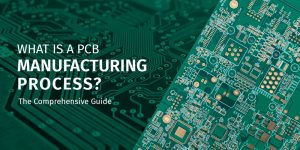Surface-mount devices (SMDs) are electronic components designed to be mounted directly onto the surface of printed circuit boards (PCBs).
They are smaller and lighter than traditional through-hole components, enabling denser and faster circuit assembly.
This guide explains the basics of SMDs, how they work, their advantages, and where the technology is heading.
Introduction to Surface-Mount Devices (SMDs)
A surface-mount device is an electronic component soldered directly to the surface of a printed circuit board.
Unlike through-hole components, SMDs don’t require drilled holes for leads.
They are packaged in forms such as resistors, capacitors, diodes, and integrated circuits.

SMDs were developed to improve assembly speed, reduce size, and support automated manufacturing.
Because of their small footprints, they allow engineers to fit more functionality onto smaller boards.
This design shift is essential in smartphones, wearables, automotive electronics, and medical devices.
Manufacturers can also automate placement and soldering, reducing human error and labor costs.
Understanding SMD basics helps newcomers make better decisions about component selection, assembly methods, and repair techniques.
How Surface-Mount Technology Works
Surface-mount technology (SMT) is the process used to assemble SMDs onto PCBs.
The process starts with applying solder paste to the pads on the board.
SMT supports high-volume production, ensuring uniformity and quality.
By mastering SMT basics, beginners can understand why most modern electronics rely on SMD components and how these steps affect reliability and cost.
Placement and Soldering Process
The placement stage involves high-speed pick-and-place machines that align components with great precision.
Solder paste printed onto the PCB pads holds each part temporarily.
After placement, the board enters a reflow oven where temperature profiles melt the solder.
The solder cools and solidifies, securing the components.
For double-sided boards, the process can be repeated on the other side.
This technique allows complex designs without sacrificing assembly speed or accuracy.
Common SMD Component Types
Common SMD components include chip resistors, ceramic capacitors, light-emitting diodes (LEDs), diodes, and microcontrollers.
Each type is packaged for easy handling by automated systems.
Integrated circuits in SMD form can have hundreds of pins, enabling advanced functionality in compact spaces.
These components are standardized into codes like 0603 or 0805, indicating their physical size.
Knowing these types helps beginners identify, source, and assemble the right parts for their projects.
SMD vs Through-Hole Components
Through-hole components use leads inserted into drilled PCB holes and soldered on the opposite side.
SMD components attach directly to the surface without drilling.
This method allows smaller boards, higher circuit complexity, and easier automated assembly.
Their compactness and production efficiency make them ideal for consumer, automotive, and industrial devices.
Understanding the difference helps beginners choose the right technology for their needs.
Benefits of Surface-Mount Devices Today and in the Future
SMDs offer clear advantages: smaller size, lighter weight, and compatibility with automated assembly.
They enable faster production, lower labor costs, and higher consistency.
In the future, SMDs are expected to support even higher densities, advanced materials, and integration with flexible or 3D-printed circuit boards.
Emerging trends like miniaturized sensors, power modules, and chip-scale packages will extend SMD benefits.
For beginners, learning SMD fundamentals now means being prepared for future innovations.
Miniaturization and High-Density Assembly
SMDs allow engineers to pack more functions into smaller areas.
This is essential for modern electronics, from smartphones to medical implants.
High-density assembly reduces board space, lowers weight, and improves performance.
As designs shrink, SMDs will remain the go-to technology for advanced circuits.
Cost and Production Efficiency
Automated placement and reflow soldering reduce human error and speed up manufacturing.
Less material and less labor translate into lower costs.
This efficiency allows small and large manufacturers alike to produce high-quality electronics at competitive prices.
Future Trends and Innovations
Future SMD trends include ultra-small chip packages, flexible circuits, and embedded components.
These developments will allow electronics to be lighter, thinner, and more powerful.
As AI-driven assembly improves accuracy, the potential for error-free mass production grows.
Learning about SMDs now positions beginners to adapt quickly to these innovations.
FAQs
Q1: What is the main difference between SMD and SMT?
SMD refers to the component itself.
SMT is the process of assembling those components onto a PCB.
Q2: Why are SMD components coded with numbers like 0603?
These codes indicate the physical size of the component in inches or millimeters.
They help identify compatible footprints on PCBs.
Q3: What industries benefit most from SMDs?
Consumer electronics, automotive, aerospace, and medical devices all gain from SMD miniaturization and automation.
Conclusion
Surface-mount devices are the foundation of modern electronics.
They enable compact designs, efficient production, and continuous innovation.
For beginners, understanding SMD basics opens opportunities in design, repair, and manufacturing.
As technology advances, SMDs will play an even bigger role in shaping the future of electronic products.
By learning about SMDs now, readers can build the knowledge needed for tomorrow’s technology landscape.








![What Is a Surface-Mount Device? A Beginner’s Guide [2025]](https://www.mktpcb.com/wp-content/uploads/2020/08/surface-mounting-technology.jpg)


